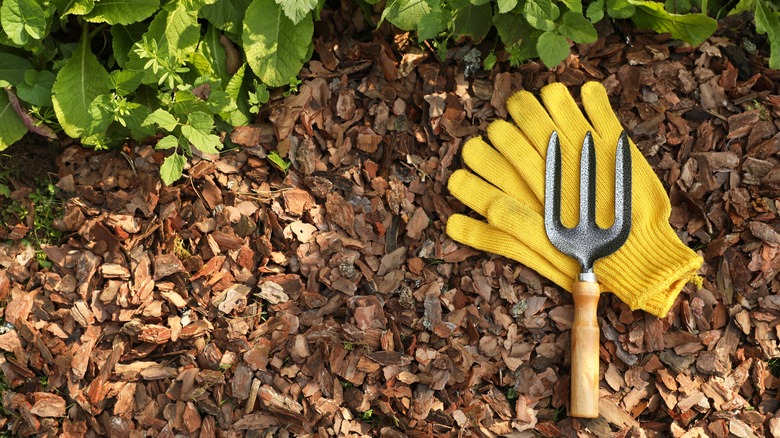Smother Spotted Spurge And Prevent It From Spreading With A Mulching Trick
Picture this: You step outside, eager to indulge in the fresh air, and there it is — a scraggly mat of green taking up space all across your garden or backyard. Enter Euphorbia maculata, better known as spotted spurge. This vigorous invader isn't just your average weed; it's an aggressive interloper that can quickly and easily claim poor and compacted soil in turf and gardens, pastures, and even those stubborn cracks in your sidewalk. Spotted spurge has oval, translucent leaves with reddish-purplish spots, growing low to the ground and forming a dense carpet of greenery that can choke out your cherished native plants.
Doesn't sound terrible, right? So why does this plant have such a bad rap? Well, the fast-spreading spurge weed's rapid growth allows it to outcompete local flora for sunlight and nutrients, diminishing biodiversity and leaving your native plants gasping for resources. In other words, this invasive species is going to come to the party and take up all the space and nutrients the plants you want to grow need to thrive, so you need to get rid of it quickly.
But no worries, as there is a proven method for getting rid of this pesky plant! In fact, one of the most effective non-toxic methods to rid your space of this invasive menace is to smother it. Doing so helps make sure that the seeds cannot germinate and whatever is already there will die off, saving your garden from spurge for at least another growing season.
How do you use mulch to kill off spotted spurge?
One of the most effective strategies for managing spotted spurge, whether it be in your garden or anywhere in your backyard, is a good application of mulch. Both organic and inorganic mulches serve as powerful barriers, blocking sunlight from reaching the weed's seeds and seedlings, thus starving them before they can photosynthesize.
To start, you will need a layer of bark, compost, or straw that is at least 2 inches thick. Lay it down on top, making sure there are no gaps for sunlight to get through. For larger particles like coarse bark, a thicker layer of 3 to 4 inches is recommended to achieve the best results. While thicker mulches tend to last longer than their finely shredded counterparts, they can eventually accumulate soil and organic matter, offering a potential germination medium for dormant weed seeds. With that in mind, if you want to make sure your mulch continues to be effective, you are going to want to replace it periodically as it breaks down.
One alternative to organic options is black, synthetic polypropylene weed barriers, which you will often find readily available at nurseries. These fabrics not only block sunlight but are also porous, allowing water to drain through — something that is important if you want to maintain soil moisture. Of course, if you don't like the look of synthetic fabric, top it with something decorative like bark or rock for a little bit of a nicer look. Either method should help kill off spotted spurge before it becomes a major problem, allowing you to garden in peace!

